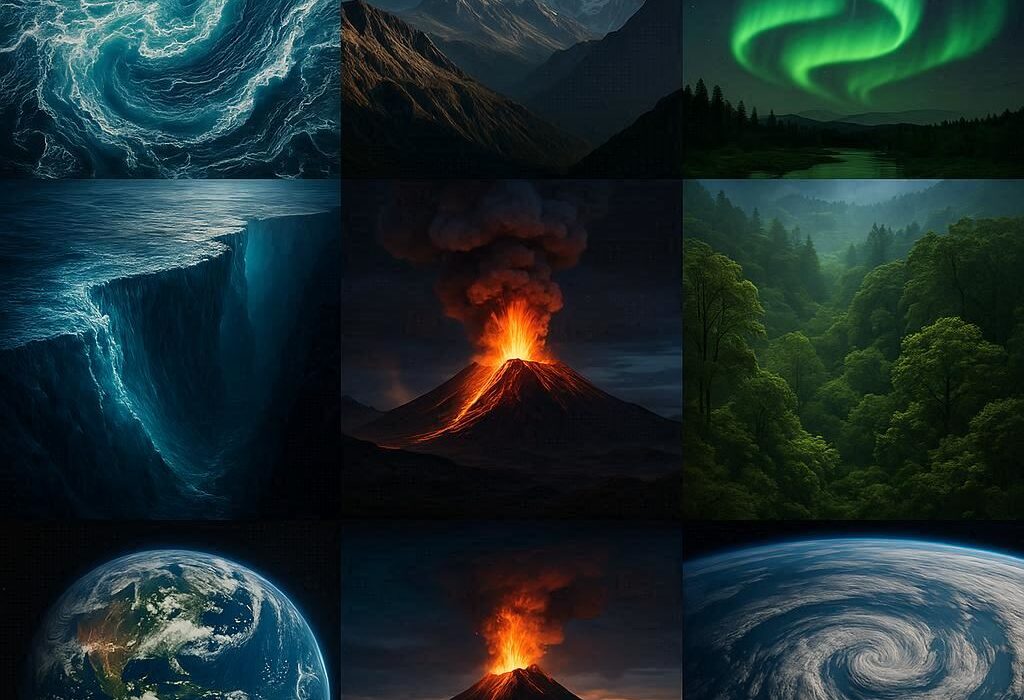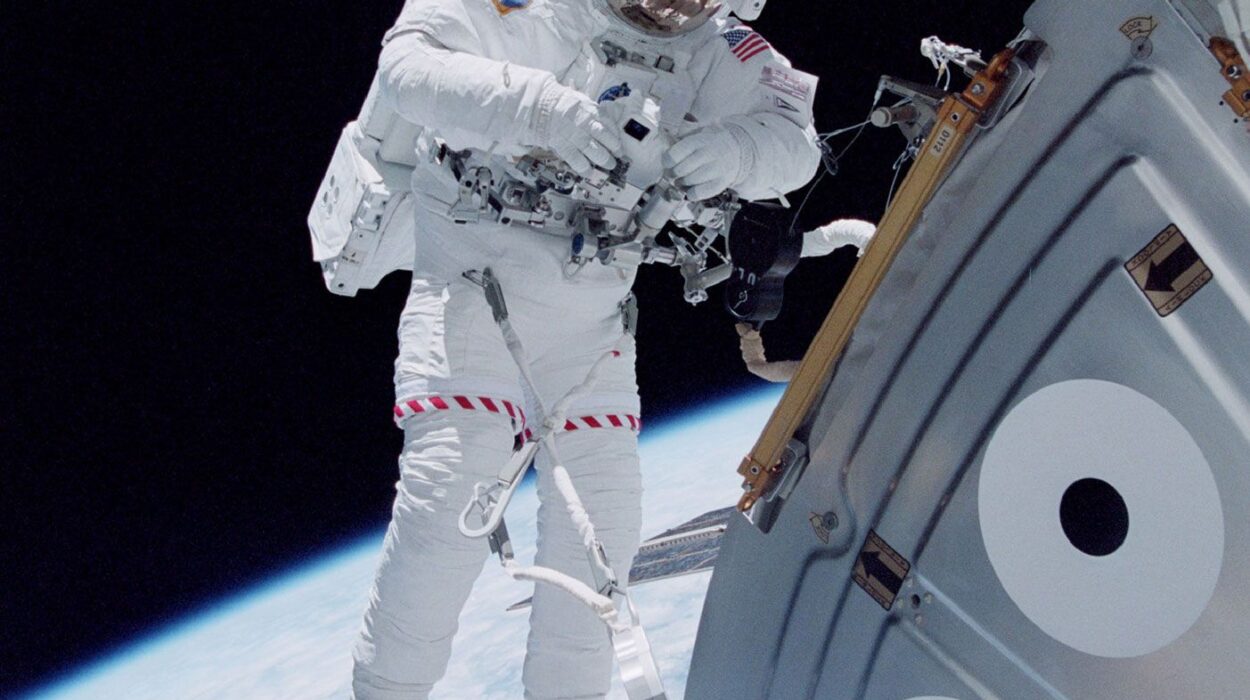A lunar eclipse is one of the most captivating celestial events visible from Earth, a natural spectacle that has fascinated humanity for millennia. It occurs when the Earth moves directly between the Sun and the Moon, casting its shadow upon the lunar surface. Unlike solar eclipses, which can only be seen from specific locations on Earth, lunar eclipses are visible to anyone on the nighttime side of the planet. They unfold slowly, changing the Moon’s color and brightness in a dramatic, mesmerizing display that connects science, history, and mythology.
The study of lunar eclipses bridges astronomy and physics, explaining how light, motion, and celestial geometry interact to create the phenomenon. But the beauty of a lunar eclipse extends far beyond science—it touches culture, inspiring art, folklore, and human wonder across civilizations. To truly understand how lunar eclipses work, one must explore both their scientific mechanisms and their deeper significance throughout human history.
The Geometry of Shadows in Space
At its most basic level, a lunar eclipse occurs when the Earth’s shadow falls on the Moon. The geometry of this event involves three celestial bodies—the Sun, Earth, and Moon—aligning in a straight or nearly straight line. This configuration is called syzygy. When this alignment happens, the Earth obstructs sunlight that would otherwise illuminate the Moon, and the result is a gradual darkening of the lunar disk.
The Earth’s shadow consists of two main parts: the umbra and the penumbra. The umbra is the central, darkest part of the shadow, where the Earth completely blocks the Sun’s light. The penumbra is the outer, lighter region where only part of the Sun’s light is obscured. When the Moon passes through the penumbra, it experiences a penumbral eclipse, which causes only subtle dimming. When it moves into the umbra, the Moon undergoes a partial or total eclipse, depending on how deep it enters the shadow.
Because the Moon’s orbit around the Earth is slightly tilted—about 5 degrees relative to the plane of Earth’s orbit around the Sun (the ecliptic)—eclipses do not happen every month. The Moon usually passes above or below Earth’s shadow during its full phase. Only when the alignment occurs close to one of the two points where the Moon’s orbit crosses the ecliptic (the lunar nodes) can an eclipse take place. These alignments occur during specific periods known as eclipse seasons, which happen roughly every six months.
Types of Lunar Eclipses
Not all lunar eclipses are the same. Their appearance and duration depend on how precisely the Sun, Earth, and Moon align. There are three main types of lunar eclipses: penumbral, partial, and total.
A penumbral lunar eclipse occurs when the Moon passes only through Earth’s penumbral shadow. Because the sunlight is only partially dimmed, this type of eclipse is subtle and often difficult to notice without careful observation or photographic comparison. The Moon may appear slightly shaded, especially toward the portion closest to the umbra.
A partial lunar eclipse happens when a portion of the Moon enters the Earth’s umbra. The darkened section contrasts sharply with the still-illuminated area, giving the Moon a striking two-toned appearance. The boundary between shadow and light moves slowly across the lunar surface as the Earth’s shadow advances.
The most dramatic is the total lunar eclipse, when the entire Moon passes into the Earth’s umbra. During totality, the Moon does not disappear entirely but glows with a reddish hue, an effect caused by sunlight refracted through Earth’s atmosphere. These “blood moons,” as they are sometimes called, have inspired countless legends and superstitions. The coloration varies from coppery orange to deep crimson depending on atmospheric conditions, such as dust, clouds, and volcanic particles.
The Red Moon Phenomenon
The reddish color of the eclipsed Moon is one of the most striking features of a total lunar eclipse. This phenomenon results from the scattering of sunlight in Earth’s atmosphere, a process known as Rayleigh scattering. When sunlight passes through the edges of Earth’s atmosphere, shorter wavelengths (blue and violet) are scattered out, while longer wavelengths (red and orange) continue through.
This refracted, filtered sunlight bends around the Earth and falls onto the Moon’s surface even when it is entirely within the umbra. In effect, the Moon is illuminated by light from all the sunsets and sunrises occurring simultaneously on Earth’s horizon. The exact shade of red depends on atmospheric clarity. A clean atmosphere yields a brighter orange hue, while dust and pollutants produce a darker, more somber red. After large volcanic eruptions, the Moon can appear almost black or brownish during totality due to increased atmospheric particulates.
This play of light is not only beautiful but scientifically revealing. By analyzing the color and brightness of eclipsed moons, scientists can study the composition of Earth’s atmosphere, detecting changes in aerosols, pollution, and volcanic activity. Thus, every lunar eclipse provides not just a show for observers but also data for atmospheric science.
The Mechanics of Lunar Motion
Understanding lunar eclipses requires a closer look at the dynamics of the Moon’s orbit. The Moon revolves around Earth in an elliptical path, taking about 27.3 days to complete one orbit. However, because Earth itself is moving around the Sun, the Moon takes approximately 29.5 days to return to the same phase, a period known as the synodic month.
For an eclipse to occur, the full Moon must align closely with one of the lunar nodes—the points where the Moon’s orbital plane intersects the ecliptic. These nodes slowly move westward over time, completing a full cycle approximately every 18.6 years, known as the precession of the lunar nodes. This movement determines the periodicity of eclipses and contributes to long-term eclipse patterns such as the Saros cycle.
Because the Moon’s orbit is inclined and elliptical, the size and duration of lunar eclipses vary. When the Moon is near its perigee (closest point to Earth), it appears larger in the sky and passes more quickly through Earth’s shadow. When near apogee (farthest point), the Moon moves more slowly, producing longer eclipses. The totality phase of a lunar eclipse can last anywhere from a few minutes to nearly two hours, depending on the geometry of the alignment.
The Saros Cycle and Eclipse Prediction
One of the most remarkable discoveries in ancient astronomy was the recognition of the Saros cycle, a repeating period of about 18 years, 11 days, and 8 hours, after which nearly identical eclipses occur. This cycle arises because the orbits of the Earth and Moon realign almost perfectly after this interval, resulting in similar geometrical conditions.
Ancient Babylonian astronomers used the Saros cycle to predict eclipses long before the development of modern mathematical astronomy. Each Saros series begins with a small penumbral eclipse and gradually evolves through partial and total phases before fading away over centuries. A single Saros series can last for more than a thousand years, producing dozens of eclipses in sequence.
Today, astronomers use precise models incorporating gravitational perturbations, orbital eccentricities, and nodal precession to predict eclipses with extraordinary accuracy. NASA’s eclipse catalogs can forecast events centuries into the future, detailing timing, visibility zones, and magnitudes. The predictability of lunar eclipses stands as one of the earliest triumphs of scientific reasoning over superstition.
Observing a Lunar Eclipse
Unlike solar eclipses, lunar eclipses can be observed safely with the naked eye. No special equipment is needed, as the Moon’s brightness never reaches harmful levels during any stage of the event. However, telescopes and binoculars enhance the viewing experience, revealing fine details of the shadow’s motion and subtle color variations on the lunar surface.
A typical total lunar eclipse unfolds over several hours, passing through multiple stages. It begins with the penumbral phase, when the Moon starts entering Earth’s outer shadow, dimming almost imperceptibly. As it moves into the umbra, the partial eclipse begins, with a dark bite appearing along the edge. This darkness spreads until the entire disk is engulfed, marking the start of totality. During this phase, the Moon glows red, orange, or brown depending on atmospheric conditions.
As the Moon gradually exits the shadow, the sequence reverses. Observers on Earth witness the slow reemergence of brightness until the eclipse concludes and the Moon returns to its usual brilliance. The entire event can last more than five hours from start to finish.
Photographing a lunar eclipse requires moderate exposure settings and stable tracking due to the Moon’s motion. Long exposures can capture the deep red tones of totality, while composite images may record the entire progression of phases. For both amateur and professional astronomers, a total lunar eclipse offers an ideal opportunity to study lunar features under varying illumination.
Historical and Cultural Interpretations
Throughout human history, lunar eclipses have inspired awe, fear, and reverence. In many ancient cultures, these celestial events were seen as omens or divine messages. Before the advent of scientific understanding, the sudden darkening or reddening of the Moon seemed supernatural and deeply symbolic.
In Mesopotamia, eclipses were interpreted as warnings to kings, prompting elaborate rituals to protect rulers from harm. The ancient Chinese believed that a celestial dragon was devouring the Moon, and people would bang drums and create loud noises to scare the creature away. Similarly, in Incan mythology, the red color of the Moon during an eclipse was thought to be caused by a jaguar attacking it, leading to ritual shouting and weapon-clashing to defend the lunar deity.
In India, traditional Hindu cosmology attributes eclipses to the demon Rahu, who swallows the Moon in revenge after being beheaded by Vishnu. Ritual baths and fasting were prescribed during eclipses to ward off negative influences. In medieval Europe, eclipses were often associated with forebodings of war, plague, or royal death.
Yet even amid superstition, careful observation led to progress. Ancient Greek philosophers like Aristotle recognized that the curved shadow seen during a lunar eclipse provided evidence that the Earth was spherical. This simple but profound realization marked one of the earliest uses of natural phenomena to infer the shape of our planet.
The Scientific Revolution and Modern Understanding
By the time of the Renaissance, improved astronomical instruments and mathematical models had transformed eclipse study into a rigorous science. Johannes Kepler’s laws of planetary motion and Isaac Newton’s theory of gravitation provided the tools to predict and explain eclipses with remarkable precision.
Lunar eclipses became important for refining measurements of the Earth-Moon system. By timing eclipses from different locations, astronomers could estimate the speed of light and even infer the Moon’s distance from Earth. Edmond Halley, best known for predicting his namesake comet, used lunar eclipse observations to improve longitude measurements and navigation.
In the modern era, lunar eclipses continue to play a role in scientific research. Astronomers use them to study the Earth’s atmosphere, as light refracted through the atmosphere during an eclipse carries information about its composition. Space agencies have also used lunar eclipse-like conditions to test spacecraft sensors and simulate lighting for missions on the lunar surface.
The Lunar Eclipse from the Moon’s Perspective
An interesting way to understand a lunar eclipse is to imagine standing on the Moon and looking back at Earth. From that vantage point, a lunar eclipse becomes a solar eclipse caused by Earth. The Sun would appear gradually covered by Earth’s dark disk, surrounded by a bright ring of light—the glow of Earth’s atmosphere illuminated by sunlight. This reddish ring corresponds to the same refracted light that bathes the Moon’s surface in red during totality.
This phenomenon reveals the interconnected nature of celestial geometry. What appears as a lunar eclipse to us on Earth would be seen as a total solar eclipse from the Moon. Such perspectives deepen our understanding of light, motion, and the shared dynamics of planetary systems.
Lunar Eclipses in the Age of Space Exploration
The advent of space exploration has added new dimensions to eclipse observation. Astronauts aboard the International Space Station can sometimes witness partial lunar eclipses from orbit, observing Earth’s shadow cast across the Moon from above the atmosphere. Space telescopes like the Hubble have captured eclipses to study light scattering and atmospheric composition from space.
Robotic missions to the Moon have also benefited from eclipse data. When the Moon enters Earth’s shadow, its surface temperature drops dramatically, allowing scientists to study lunar thermal properties. These measurements inform the design of equipment for future lunar bases and rovers that must withstand extreme temperature fluctuations.
Moreover, the principles of eclipse observation extend beyond our planet. Astronomers use similar techniques to detect exoplanets, observing how a planet passing in front of its star causes dimming and color shifts. In essence, studying eclipses within our own system has helped humanity explore worlds light-years away.
The Frequency and Predictability of Lunar Eclipses
On average, there are between two and five lunar eclipses each year, though not all are total. Because of the precise geometry required, total lunar eclipses occur roughly every two to three years for any given location. Each event follows a predictable schedule based on orbital mechanics.
The alignment that causes eclipses occurs only during an eclipse season, when the Sun is near one of the lunar nodes. Each season lasts about 35 days, during which both a solar and a lunar eclipse may occur. Over centuries, these patterns repeat according to the Saros cycle and other long-term cycles such as the Inex and Tritos series.
Modern astronomy can calculate the timing of future eclipses with astonishing accuracy. For example, scientists can predict eclipses thousands of years in advance, considering even small gravitational perturbations from other planets. Such predictability underscores the precision of celestial mechanics and the enduring reliability of physical laws governing the cosmos.
The Symbolism and Modern Fascination
Even in the age of science, lunar eclipses retain their mystique. Modern observers continue to be moved by the sight of the blood-red Moon, often gathering for public viewings and livestream events. Social media amplifies global excitement, connecting millions who share in the same cosmic experience.
Culturally, the lunar eclipse has evolved from an omen of doom to a symbol of renewal and cosmic balance. Many see it as a reminder of Earth’s place in the solar system, a visible demonstration of the planet’s shadow stretching into space. It invites reflection on the cycles of nature, time, and the delicate interplay of light and darkness.
For educators and scientists, lunar eclipses offer powerful teaching moments. They provide tangible demonstrations of orbital dynamics, atmospheric science, and optical physics. They also inspire curiosity—a gateway to astronomy for new generations of stargazers.
Future Eclipses and the Continuing Study of the Moon
As humanity looks toward returning to the Moon and establishing a sustained presence there, understanding lunar conditions—including eclipses—remains vital. Extended lunar nights and shadow cycles influence power generation, temperature regulation, and communication for future missions. By studying the thermal effects of eclipses, scientists can design systems capable of enduring the harsh environment of the Moon’s surface.
Astronomers continue to use eclipses as natural laboratories. Spectroscopic analysis of refracted sunlight during lunar eclipses helps monitor Earth’s changing atmosphere, providing data relevant to climate studies. This makes each eclipse not only an astronomical event but also a tool for understanding our own planet.
With advancing technology, eclipse observations will become more precise and widespread. Automated telescopes, global networks of observers, and space-based instruments ensure that every eclipse is documented in unprecedented detail. As we learn more about how light interacts with planetary atmospheres, the study of eclipses may even aid in detecting signs of life on distant worlds.
Conclusion
The lunar eclipse stands as a timeless bridge between nature’s beauty and scientific understanding. It is a spectacle that unites humanity, visible to all who share the night sky. What once inspired fear now inspires curiosity, and what once symbolized mystery now illustrates the precision of cosmic order.
To watch a lunar eclipse is to witness the harmony of celestial motion, the dance of light and shadow orchestrated by gravity and geometry. It reminds us that Earth, the Moon, and the Sun are bound together in a delicate cosmic rhythm, each eclipse marking another step in that eternal cycle.
Beyond its aesthetic and scientific value, the lunar eclipse is a reflection of humanity’s evolving relationship with the universe. From myth to mathematics, from awe to analysis, it embodies our journey toward understanding. As long as the Earth and Moon continue their celestial dance around the Sun, the lunar eclipse will remain one of the most profound and beautiful demonstrations of our place in the cosmos.






